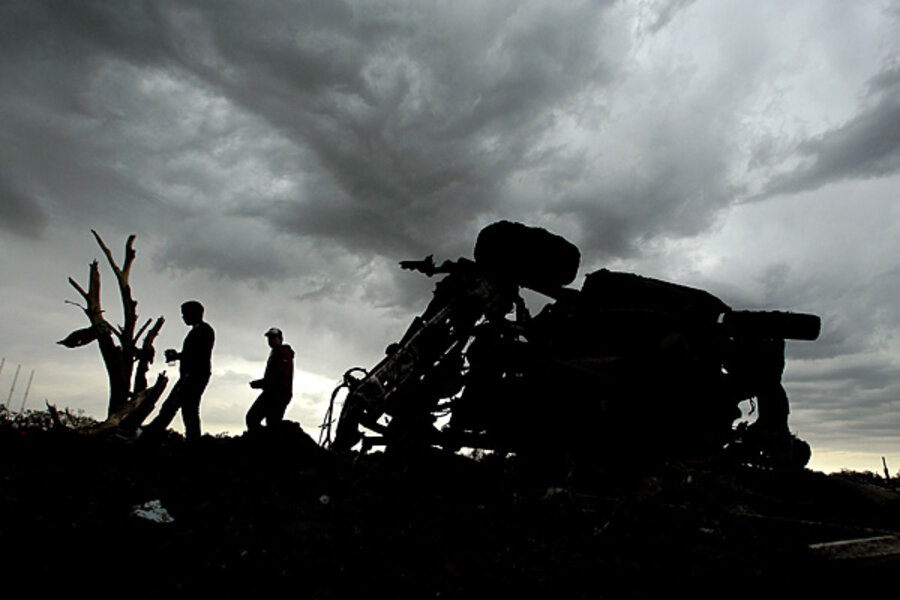Oklahoma tornado: Energy dodges a bullet
Loading...
Monday's deadly Oklahoma tornado has left relatively intact one of the state's biggest and fastest-growing industries: energy.
A boom in US oil and gas production is underway with drilling rigs, storage tanks, and pipelines increasingly dotting the country's landscape. Some of the development is taking place in and around so-called "tornado alley," an unofficial swath of much of Oklahoma that spills over into surrounding states most prone to tornadoes.
This may sound more worrying than it is. While hurricanes routinely disrupt offshore oil and gas production in the Gulf and elsewhere, inland, rigs, pipelines, and tanks are comparably unaffected by extreme weather – most of the time.
"I don't see a tornado disrupting our mass oil and gas delivery methods," Otto Lynch, a civil engineer who serves on the American Society of Civil Engineers' committee on America’s infrastructure, said in a telephone interview. "[Pipelines] are typically underground. The substations around the routes are very small, low profile, and very rigid. Unless a tornado hit directly, I don’t see an issue from the mass delivery standpoint."
Monday's twister wasn't too far from what could have been a direct hit. Oklahoma ranks fourth in natural gas production in the US. It's in fifth place for oil production. Just 75 miles northeast of the tornado's destructive path lies Cushing, Okla., which has served as a major oil and gas distribution hub for decades. It's also ground zero for the heated debate over the Keystone XL pipeline, which would carry oil from Canada through Nebraska and then to Cushing and Gulf refineries.
Monday's tornado had no impact on TransCanada facilities or construction in the area, according to Shawn Howard, a spokesman for the Canadian company, which is behind Keystone XL and is currently building a portion of the pipeline system from Cushing to Nederland, Texas.
"TransCanada’s oil and gas pipeline facilities are designed and constructed to withstand high (hurricane force) wind loads," Mr. Howard wrote in an e-mail. "In the rare event of damage to facility, safety devices and shut off valves would respond to shut the pipeline down and minimize the amount of product released."
A natural gas pipeline 53 miles southeast of Moore, Okla., suffered damage, Reuters reported. The damaged segment was isolated by the pipeline's owner, Southern Star Central Gas Pipeline Inc., and several receipt points would be unavailable until further notice.
Tornadoes do pose threats to other parts of the energy infrastructure. The destruction of residential areas can expose the end of natural gas distribution lines, and sometimes spark fires. Elevated transmission lines that provide power to the industry (not to mention residents and businesses) are also exposed to extreme weather. Wind and solar installations are intentionally exposed to the elements.
And not all pipelines are underground. Some are elevated, and at hubs like Cushing, vast quantities of oil and gas are stored in above ground tanks.
"Although underground interstate pipeline systems are not usually affected by severe storms, such as tornadoes, some above ground pipelines and components can be affected by these storms," Jeannie Layson, director for governmental, international, and public affairs at the US Department of Transportation Pipeline and Hazardous Materials Safety Administration (PHMSA), said in an e-mailed statement. "PHMSA requires operators to continuously monitor their systems to verify integrity, check for leaks or signs of disruption, and to make repairs when necessary to address safety concerns."
Still, tornadoes may rank near the bottom of the list of concerns for onshore energy production.
"What I would be more worried about is seismic activity," Mr. Lynch said. "You get an earthquake – that would be much more detrimental than the possibility of a tornado."






